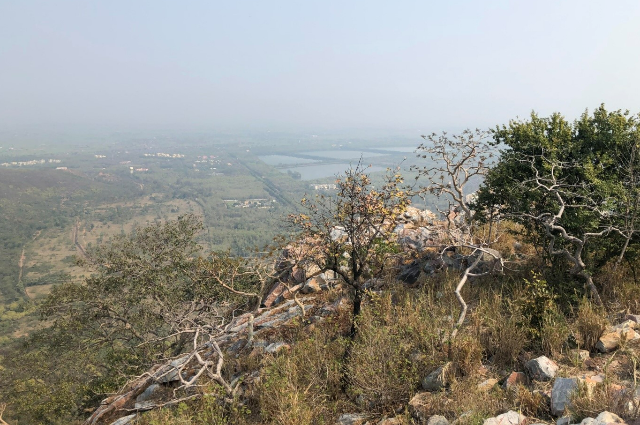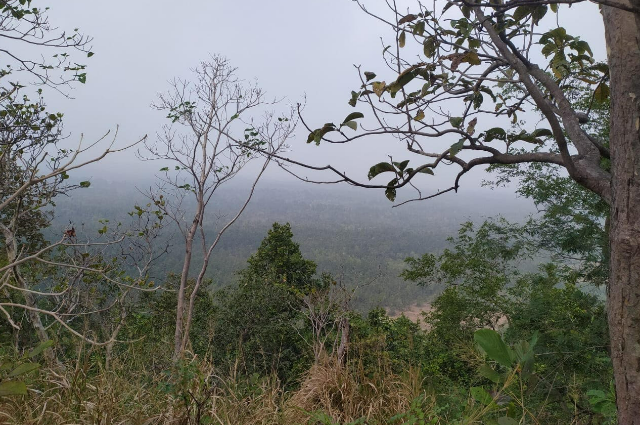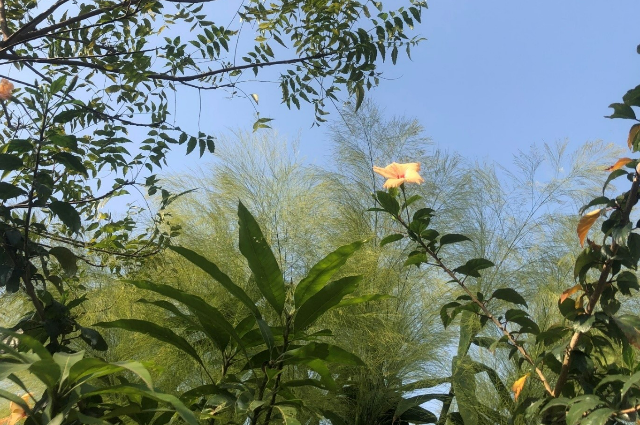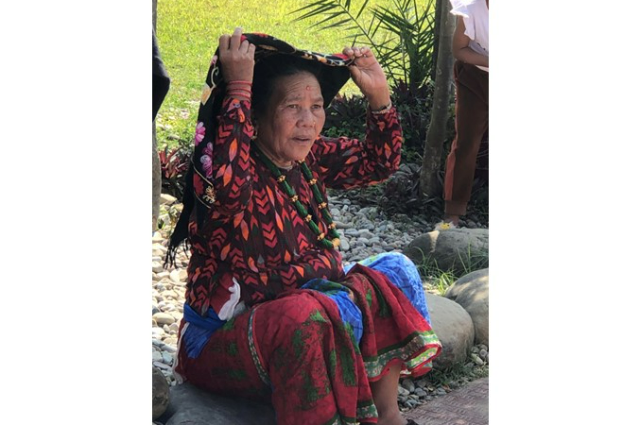Forests as an important natural resource
Forests are an important natural resource that has evolved over millions of years in geologic time scale and constitute a significant biogeographical area of our planet. However, due to ruthless over exploitation of this precious natural resource for several past centuries as a consequence of accelerating increase in human populations; our forests are showing an alarming sign of depletion. Across both Northern and Southern Hemispheres, we are observing rapid degradation of our forest resources mostly due to numerous anthropogenic factors.

Photo credit: Saikat Kumar Basu
Some of these factors include over exploitation of both major and minor forest resources for both human sustainability as well as for industrial uses like timber, leaves and stems, mushrooms, medicinal and ornamental plants, wild honey, poaching and illegal capture of endangered wildlife for international wildlife black markets, destruction of virgin forests for expanding agriculture, industry and for building infrastructures along with both natural and human induced wildfires are ravaging and destroying our forests globally. The global Climate Change together with irregular weather patterns and high levels of pollution has also been impacting our sensitive forests. The depletion of forests is a common trend around the globe. But, the most significant depletions are evident in economically backward, politically unstable; yet biodiversity rich developing and under developing countries of Asia, Africa and Latin America.

Photo credit: Saikat Kumar Basu
The human dependence on forest as a natural resource
The unprecedented growth of human populations around the globe has been the most important single catastrophic factor impacting our forests as a natural resource. The global economy is regulated by less than 5% of our planet’s populations. A vast majority of the human population survive under abject poverty with a significant number of people serving in remote, rural and inaccessible areas, forest fringe areas and even inside forests like many aboriginal communities of Asia, Africa, Latin America and parts of Europe and the whole of vast Siberia. All these poor communities are heavily dependent on their local forest resources for their immediate survival and sustainability. In the past, the local human populations were within the carrying capacity of these local forested areas.
Infringement inside our forests is a serious concern for the safety and security of global forested areas.

But over time various socio-economic, socio-political and socio-cultural factors have pushed more people towards our vulnerable forests for their basic survival. These factors include wars, genocides, riots, political pressures, both legal and illegal immigration, human migration, Climate Change, lack of suitable employment, abject poverty, economic backwardness, illiteracy, poor technological uses many of which are archaic approaches etc that been pushing significant sections of our underprivileged communities to inhabit or settle inside or adjacent to vulnerable forested areas.

Photo credit: Saikat Kumar Basu
Examples of ruthless exploitation of forest resources around the globe
The challenge of anthropogenic pressures on local forests is thereby increasing beyond the threshold levels of the carrying capacity of local forests. A very timely example has been the settlement of several millions of Rohingya refugees subjected to discrimination, persecution and violence in Myanmar in the Ukhia and Teknaf sub-districts of Chittagong in neighbouring Bangladesh. Overwhelmed with the alarming humanitarian crisis, the Bangladesh government was forced to clear forests and important elephant migration corridors to establish massive refugee settlement areas. The huge number of make shift human settlements in the hilly forested areas have severely depleted local forests and biodiversity, increased poaching and over exploitation of forest resources and enhanced human-animal conflicts. These factors have contributed in the destabilization of the socio-political stability of the region with long term negative impacts on the survival of the local forests.

Photo credit: Saikat Kumar Basu
This is not at all an isolated incident. If we look around the planet there are numerous such examples to be seen without difficulty. The massive Jhum (Slash and Burn) cultivation practised in Pakistan, Nepal, Bangladesh, North East India and in parts of tropical Amazon in South America; grazing of cattle and livestock in vulnerable forest belts across Asia, Africa, Latin America and in parts of Europe and North America, aboriginal rights of forest use being exploited and misused by sone communities in the name of preservation of ancient cultural practices, unmonitored eco-tourism in forested areas in island nations, poor developing and under developed countries rich in biodiversity and unrestricted use of major and minor forest products are all synergistically contributing towards the degradation of the forests.

Photo credit: Saikat Kumar Basu
Similarly, the clearing of critically endangered mangrove forests and in the Sunderban delta region for collecting firewood, establishing fish farming and expanding agricultural lands through both legal and illegal methods are making the entire coastal belts vulnerable to turbulent cyclonic influences due to the rapid changes in the local land use patterns. This according to my research is only the tip of the iceberg of the global concern for degradation and destruction of our natural forests predominantly due to various anthropogenic factors. The level of destruction is even wider and alarming from what is being reported in both national and international media! In the true sense of the term we are going through an accelerated destruction of our natural forest resources at an unprecedented rate around the globe. Forests have transformed into safe refuge for many terrorists and anti-social groups as well as a safe corridor for both human and wildlife trafficking, movement of illegal immigrants into a country as well as a pathway for movement of contraband commodities across heavily forested international border areas.

Photo credit: Saikat Kumar Basu
Sustainable Production and Consumption
We have to accept the fact that we are dependent on our forest resources both directly and indirectly. Furthermore, we also need to accept that there is no immediate alternative available to us to curb our dependency on the available forest resources. Lastly, we also need to accommodate several forest based aboriginal and remote forest resident communities who have known forest as their only home for several centuries. It is therefore not possible to irradiate all the geopolitical, economic and ecological issues impacting depletion of global forests overnight. Hence, the best we could afford to do under the current circumstances is to use our natural forest resources judiciously, avoid over exploitation, increase monitoring and surveillance of the last standing forests comprehensively as well as stop forests being used as corridors for anti-social organizations, illegal immigrants, traffickers and poachers. These small steps now could help us in the long term in protecting our scanty forest resources following good Forest Management Practices (FMP).

Photo credit: Saikat Kumar Basu
One of the essential steps could be Joint Forest Management (JFM) between bordering nations sharing massive forested areas. Joint monitoring and surveillance, sharing intelligence between forest and border security forces, customs, narcotics and immigration departments, sharing of good forest management practices between neighbouring countries could greatly curb trafficking, smuggling, theft and poaching. Joint sharing of natural resources between adjacent countries could serve as an excellent model for sustainable forest utilization and conservation of forests. This will have positive impact on both local and regional forest conservation through extensive afforestation programs and regeneration of forest stands. The benefits will be both ecology and economy walking hand in hand. This will off course need positive cooperation, collaboration, communication and coordination (4Cs) between participating nations. Thus a sustainable use of forest would slowly develop and prevent the reckless over exploitation as we currently encounter.

Photo credit: Saikat Kumar Basu
All stakeholders involved in this process need to work together on a common platform. These include local governments and non-government agencies, forest departments, local forest residents, villagers, aboriginal communities, politicians, lawyers, corporate members, journalists, academics, foresters, ecologists, conservators as well as lawmakers. A joint platform of stakeholders will be better geared to take important management decisions regarding sustainable utilization as well conservation of local forests and biodiversity more effectively and efficiently.

Photo credit: Saikat Kumar Basu
Our forest needs better protection and for that there is need for training and developing highly organized and well equipped ground Forest Security Forces (FSF). Our forest guards cannot stand up against poachers, terrorist, infiltrators, smugglers, traffickers with old three not three rifles anymore. The groups against which they need to stand up for protecting the forests are heavily armed with automatic modern weapons. Hence, to enforce proper law and order in the forest belts highly trained and action prepared ground forest security forces are essential to save our forests.

Photo credit: Saikat Kumar Basu
Several marginal and economically backward communities are heavily dependent on available forest resources for their sustainability. If we fail to ignore this human part of the forest equation; then we are never going to be able to protect our forests successfully. Hence to protect their forest use rights and to provide them the opportunity to use forest resources judiciously, we need to have proper quota system where communities could exploit forest resources within the framework of forest conservation rules. Stray fire in forest areas abs grazing livestock in buffer areas need to strictly limited. Such community members could be employed by local forest departments as labourers, couriers, guards and informers for sustainable use and protection of the forests. Forest based communities have intimate knowledge of their local ecosystems and available natural resources. It will be extremely beneficial to use the indigenous knowledge in long term sustainable use of forests, local biodiversity and in promoting forest conservation. We have to accept and learn to coexist with other species on the planet for our future.

Photo credit: Saikat Kumar Basu
Food for thoughts
Forests provide food, fodder, fuel, fertilizer, furniture, homes, infrastructure as well as oxygen for our survival and hence needs protection or our own survival and sustainability. Forests also serve as a great carbon sink through the process of natural carbon sequestration; and serve as the lungs of this green planet. Hence, we need to be able to protect forest by sustainable consumption of forest products, major and minor to leave this precious natural resource for our future generations. Our actions today will determine our future tomorrow; hence it is important for us to act now. Without forests as humans our future will be doomed. Every infrastructure project in forested areas should have comprehensive Environmental Impact Assessment (EIA) to make sure we understand the gains abs loss we will incur by exploiting our forests. Mining areas around and within forests are being closed down in developed countries to reduce the anthropogenic impacts in the forests.

Photo credit: Saikat Kumar Basu
More trees are being planted to reduce the anthropogenic footprints on our forests. But unless our public is educated and aware about the sensitive nature of our forest; nothing or very little could be achieved in terms of successful forest conservation. Hence, we all need to come forward in our thoughts as well as through our actions to use our forest resources judiciously, sustainably and with an eye on our future prospects through proper conservation of forests. Human civilizations have developed using the available forest resources over several centuries. Our forests are now over exhausted in continuously catering to our burning greed and vicious industrial needs. It is therefore fine for us to reflect on what Mahatma Gandhi said: ‘The earth provides enough to satisfy every man’s need; but not to every man’s greed’. Sustainable consumption of global forest resources is the only choices we are left with if we wish to save abs protect our forests for the not so distant future.

Photo credit: Saikat Kumar Basu
